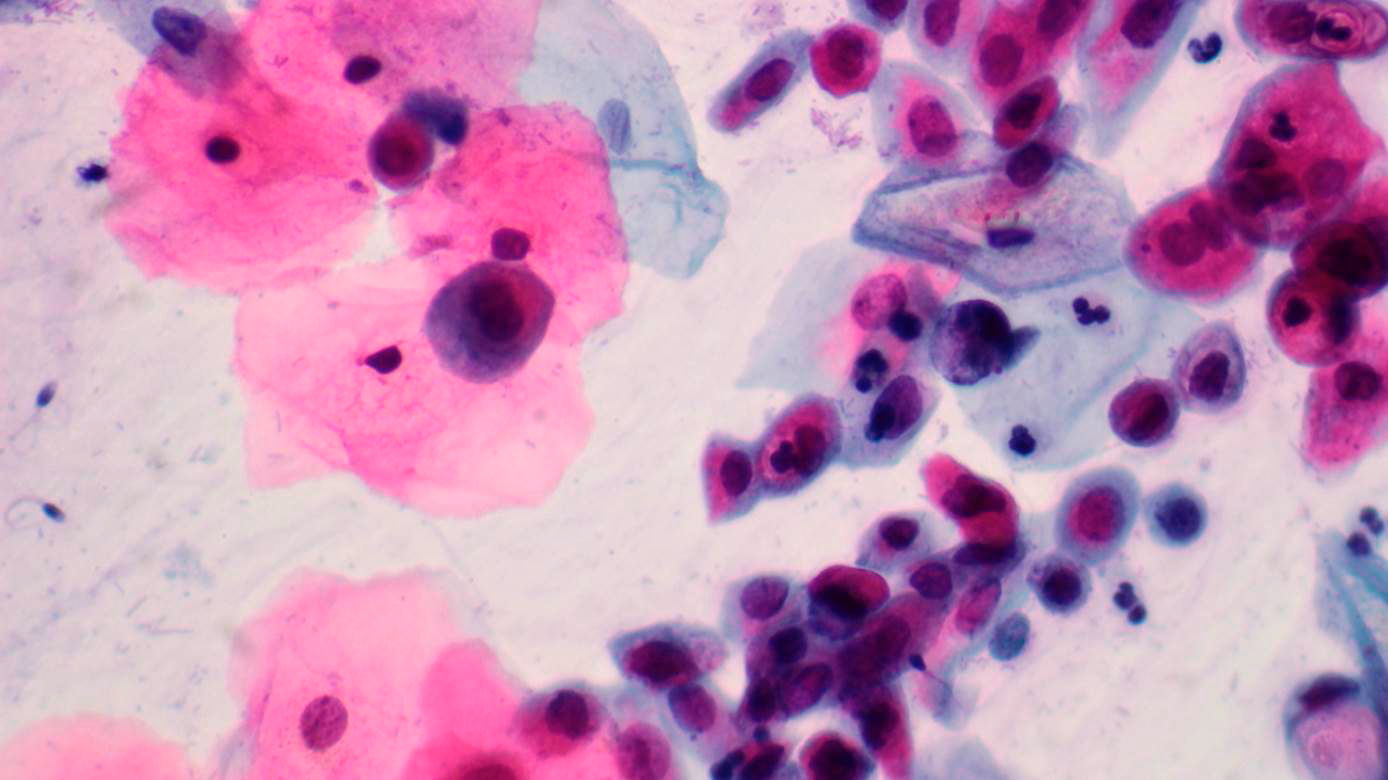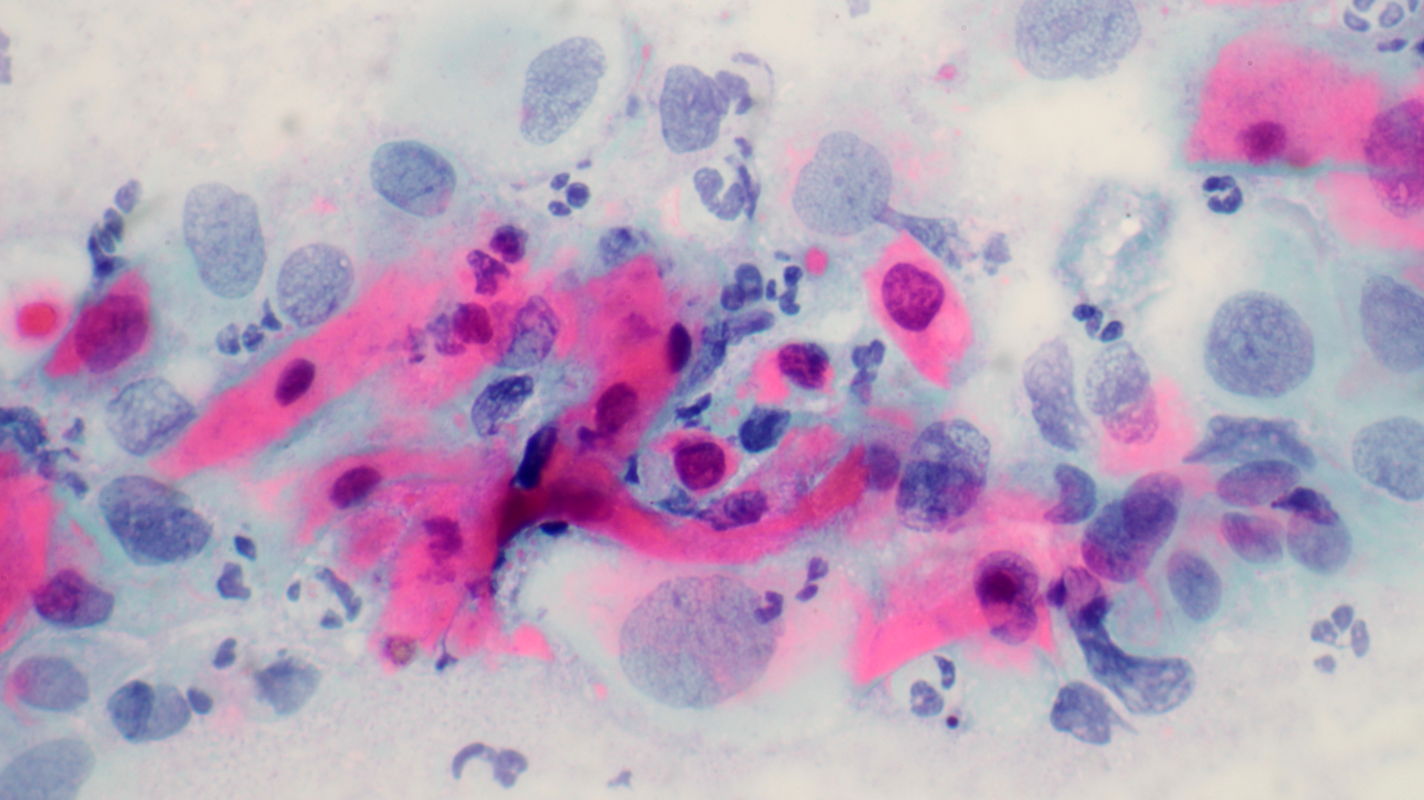Secondary Prevention of Cervical Cancer
Class IV – Immediate Precursors of Cervical Cancer
Class IVa-p

Example of class IVa-p:
Eosinophilic and basophilic immature dyskaryotic squamous epithelial cells in a 41-year-old patient. Colposcopic examination showed an atypical T-zone type 1 with major change and CIN 3 on biopsy.
Class IVa-g

Example of class IVa-g:
Syncytium of basophilic immature dyskaryotic glandular epithelial cells from the endocervix of a 45-year-old patient. Colposcopic examination showed a T-zone type 3. Endocervical curettage revealed adenocarcinoma in situ (AIS) on histology.
Class IVb-p

Example of class IVb-p:
Eosinophilic immature dyskaryotic cells with pronounced anisokaryosis and hyperchromasia of the squamous epithelium plus enlarged bare nuclei in a 48-year-old patient. Colposcopic examination showed an atypical T-zone type 3 suspicious for cancer. Histopathologic examination of loop excision specimen revealed invasive squamous cell carcinoma pT1A2, graded as G2 R0 L0 V0 Pn0.
Class IVb-g

Example of class IVb-g:
Syncytium of eosinophilic and basophilic immature dyskaryotic cells with pronounced anisokaryosis, hyperchromasia and nucleoli of endocervical glandular epithelium, and tumor diathesis in the background of a smear from a 46-year-old patient.
Histopathologic examination of loop excision specimen showed invasive adenocarcinoma of the endocervix usual type G2 surrounded by extensive adenocarcinoma in situ.